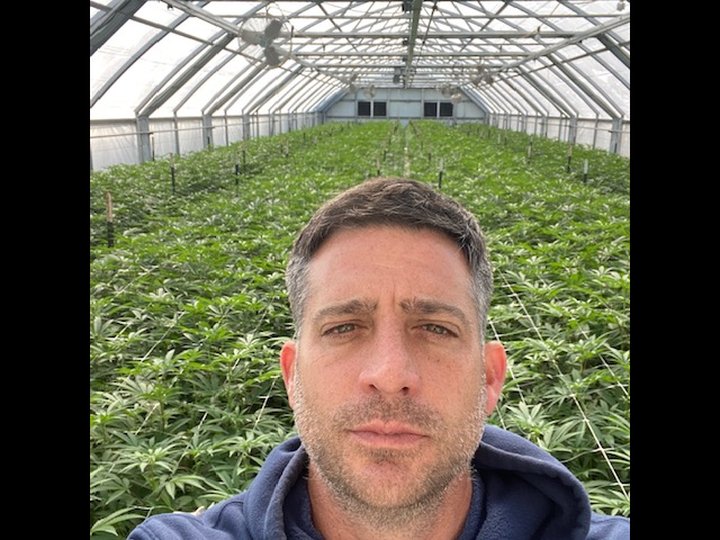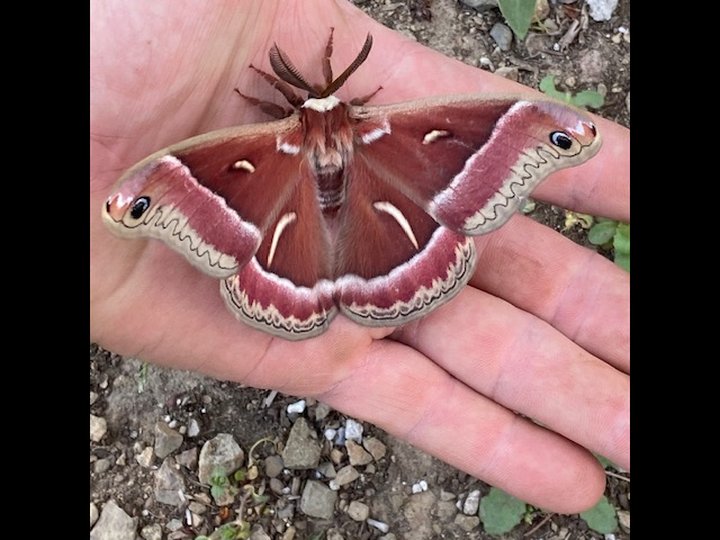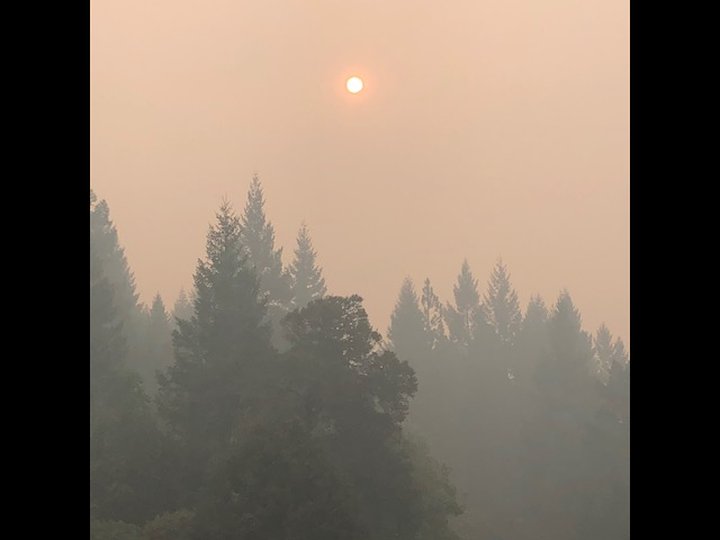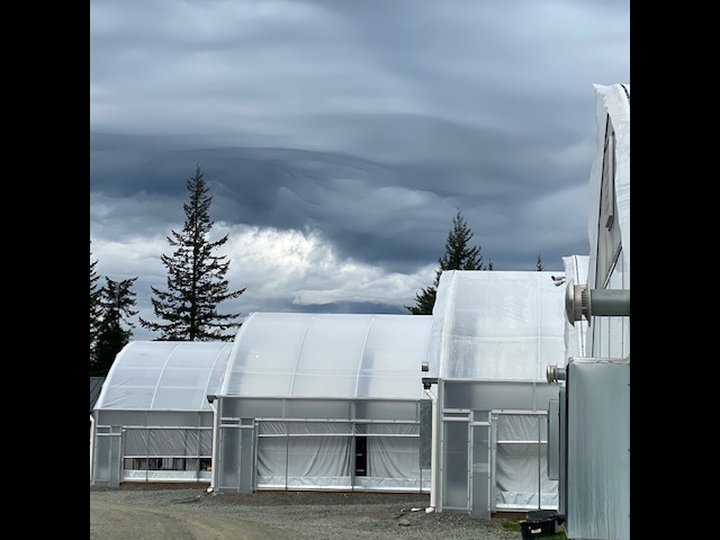Photos: Jesse Duncan.
Farming ganja in the hills of Humboldt is like a marathon. It takes focus, grit, determination, persistence, as well as physical and mental strength.
The season is long – 9 months for many. Weather patterns are extreme, and risks of fire, theft and crop loss are real. Farming isn’t for the faint of heart, it’s for those who love their craft and are committed to normalizing cannabis use and touching other people with their life’s work.
It’s March 1st. The mountains are covered with snow and the morning frost blankets the highlands. Native grasses and shrubs sparkle in the morning sun and wind out of the north or east chills you right to the bone and dries out your skin.
Clones are arriving or you are popping seeds, so it’s time to prep the nursery. The team is brimming with excitement and anticipation. Dreams of a crusher season float around and everyone feels at home. You rope off a skin, or large plastic cover, and pull it over the naked greenhouse frame. You pull the plastic tight and wiggle wire it into place and begin prepping the interior. Lights and heaters are hung and it’s go time.
Baby plants from places like Source, Highline, Phinest, and Seed Junky arrive by the thousands and things get real. Each clone is dipped in an organic pesticide/fungicide as a preventative measure and is then planted in your favorite soil or soilless blend. Veg plants are the lifeblood of the operation and are cared for exquisitely. They are fed and are physically manipulated to create the frame or shape you desire – short and squatty in my case. After three weeks plants are moved to their forever home in beds or larger containers.
April is upon us and the hillsides bloom…a magnificent display of white, yellow, purple, orange, and pink. Deer and turkey forage around and the weather is erratic – warm sun one day, hail or snow the next. Plants boost up under protective covers and by late month are transitioned to a 12-hour light cycle to induce flowering.
May is here and buds are appearing. The days begin to grow warmer on average, but the season’s last cold snap serves as a harsh reminder that summer is yet to come. Plant growth rates improve and you get a clear indication of the expected bounty of first-run dep. Teams spend countless hours touching the plant…removing lower and interior foliage and de-leafing plants to allow airflow and light penetration.
June arrives and the season reaches its busiest point. The first dep harvest nears, clones for the second run are on site and being launched, and the outdoor or full-term gardens are being prepped and planted. Soil is amended, nematodes are applied to attack soil-born pests, and the days grow hotter and longer. Mornings are chilly at higher elevations and magnificent sunrises welcome you each day. The weeks are long and productive and the farm is in full swing. First harvests arrive and after months of significant expense, cash flow nears.
July and August are explosive months. Full-term plants grow amazingly fast and second-run deps explode, offering excitement and higher yields than cold run. Plants again require hours upon hours of care…opening, bottoming, coring, leafing, and supporting plants is of paramount importance. Physically your body is reaching peak form. Your strength and stamina are radically improved, yet the wear and tear on your body is real. Eating well, sleeping well, and staying hydrated are critical as the summer months in the hills are taxing. Days are hot and dry, the sun right in your face around 3,000-foot elevations. Pest pressure grows as reproductive rates improve and your integrated pest management game needs to be on point or crop loss can be staggering.
Late summer, unfortunately, has been plagued by smoky skies. Working in the smoke is hellish, with headaches and nausea a daily occurrence for most. Ash deposits can lead to pathogen problems and can contaminate developing flowers. Marching on in these conditions is a real challenge and takes commitment, personal strength, and undying love for the cannabis plant.
September is a special month on the farm. After the fall equinox, nights grow colder rapidly. Full-term flowers begin maturing and Autumn colors are spectacular. Like the trees around them, cannabis plant leaves change in color – boasting reds, yellows, and purples. Flowers too begin to change hue, often purpling in the cold, night air. Some flowers take on a bluish or silver tint and are spectacular to behold. Plants glisten in the morning dew and pathogens like mold and mildew can overrun crowded gardens that have not been well maintained. Plants that have not been properly supported will splinter and collapse under their own weight.
October, or Croptober as it is lovingly known, coronates a long outdoor season. Dry rooms are stuffed with large colas and months of arduous efforts pay off – one hopes. Rains arrive and large, dense colas can rot if not harvested in time…a true race against the clock. Late second run deps are harvested as well as third run deps for farms at lower elevations. Mornings are bitterly cold once again and frost settles over the hills a couple of days at a time. Second cut outdoor flowers are harvested toward month-end and November arrives at last – the culmination of a nine-month marathon for most farms.
Dry
rooms are continuously bucked down, processing is in full swing, and
sales are rapid for well-connected farms with desirable product.
Late outdoor strains are harvested, as are third run deps for some.
Like early season, the weather is erratic. Sun one day, rain, or
even snow the next. Greenhouse covers are dropped, equipment like
fans and heaters are removed or covered, and soil is treated for the
winter. By month-end, the season has come to a close for most.
Physically exhausted, time for rest and reflection has arrived.
Year-round farms like ours will carry on with a winter run, but
Humboldt’s hills become quiet overall. Road traffic decreases,
silence returns, and plumes of smoke dot the landscape as homesteads
burn firewood to survive.
Farmers spend much-deserved time with their families and begin planning for the season to come. Those who had success toy with expansion, infrastructure improvements, or expanding their brand. Others contemplate closing shop and moving on.
Farming in the hills of Humboldt is a truly magical experience. You connect with nature and with the changing elements in a real and personal way. One month bleeds into another and you grow harder and stronger along the way. Your intimate connection to the earth and to the cannabis plant grows with each season. The fire within you and your desire to hone your craft and touch more lives with your work grow stronger each time. Your love for ganja and for your avocation grows and matures, as do you personally. While physically and mentally taxing, growing ganja is the most rewarding of my professional pursuits to date.
Being surrounded by nature and exposed to the changing elements while growing the world’s most beautiful flower is a gift and a complete joy. Each season is a unique experience and a unique opportunity for personal growth and overcoming challenges. Pushing your body to the limit, challenging your intellect and mental strength, and throwing down killer nugs at the end of it all means the world to me and to thousands of others.
Onward we march!





CLICK TO MANAGE